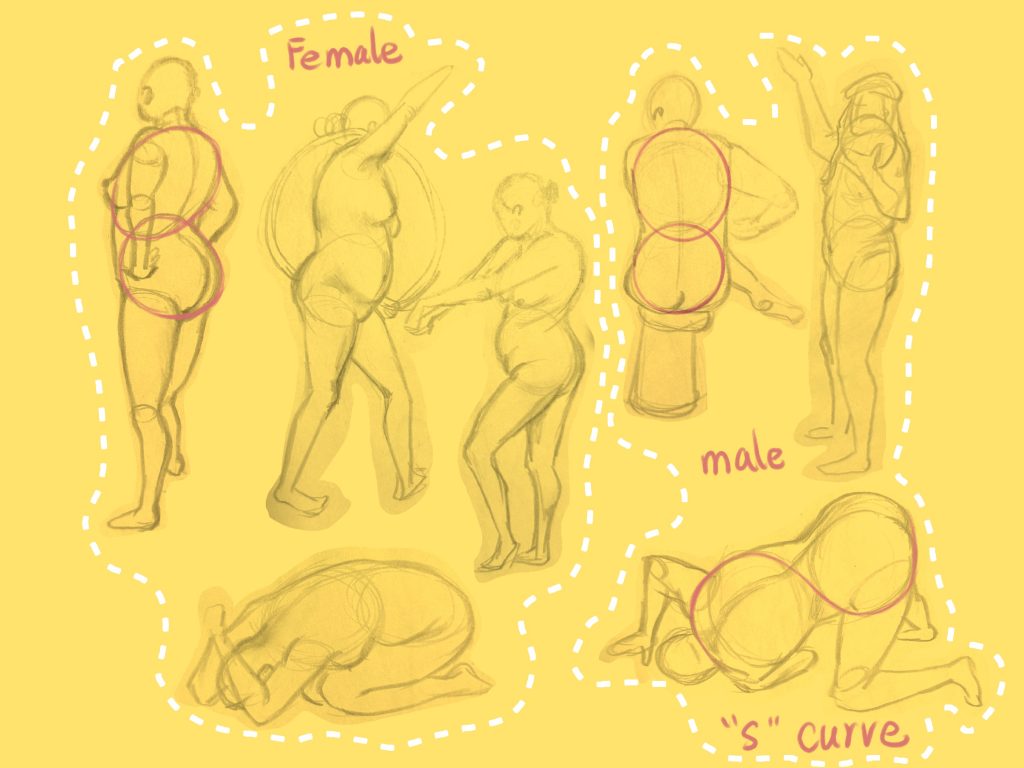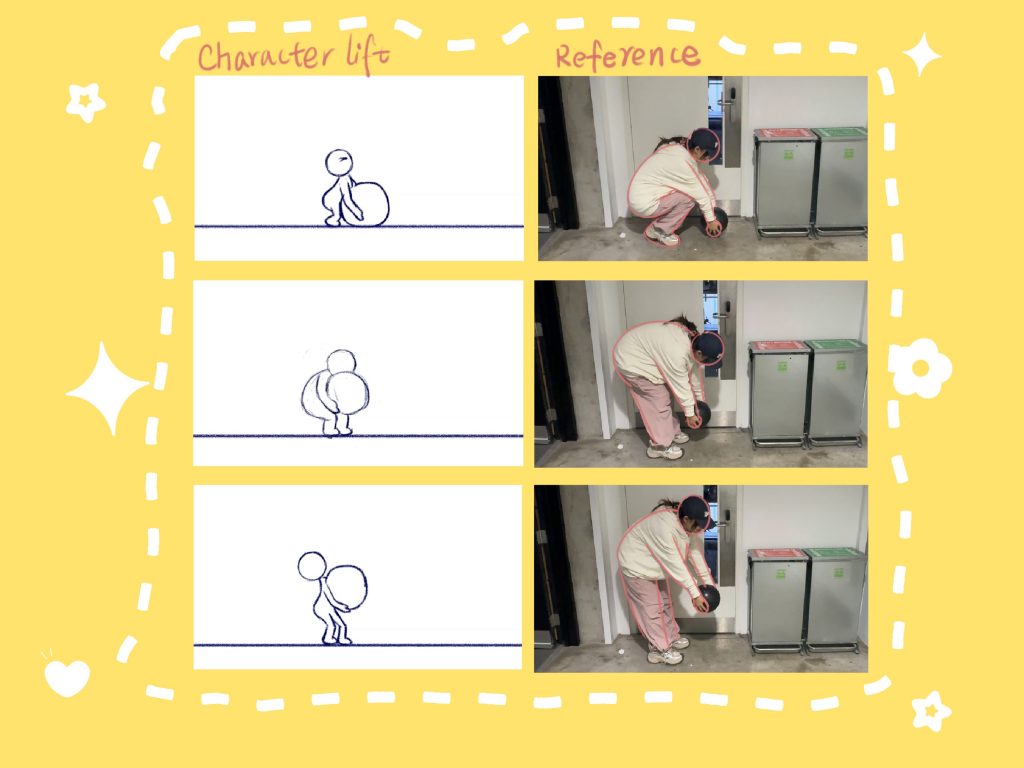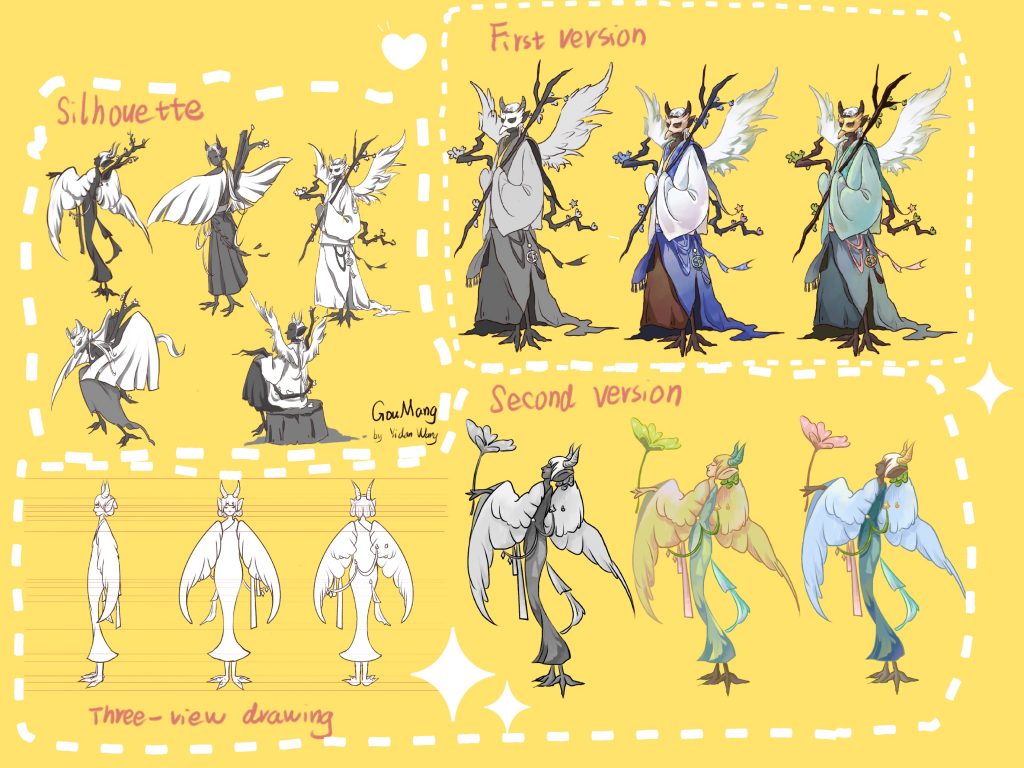Life-drawing Research
Lately, I’ve been using the “bean” method for life drawing, which simplifies the torso into two ovals—one for the ribcage and one for the pelvis. Initially, it seemed like a straightforward approach, but as I practiced more, I started to notice its limitations. For example, when drawing male figures, they often appeared too feminine because I wasn’t paying enough attention to the proportions of the ovals. I eventually realized that for male figures, the upper oval needs to be longer than the lower one. It’s a subtle change, but it really makes a difference.
Another challenge I encountered was with twisting poses. The two ovals didn’t quite capture the movement of the body, so I added an S-curve between them to show the twist. However, when I tried drawing these poses in perspective, the ovals often turned into flat ellipses, which didn’t look quite right. It made me question whether the bean method works universally or if it needs to be adjusted for different poses.

Performing and recording reference videos
In my acting classes, I’ve been experimenting with using my own body to create various shapes and movements—like walking with confidence or slouching to express insecurity. This practice has helped me better understand how the body moves and how emotions are expressed through physical movement. It’s also influenced my animation work. I used to rely more on imagination, but now I see how crucial it is to either record myself or observe real-life movements.

Character Design
When it comes to character design, I’ve been applying the principles I’ve learned from gesture drawing. I focus on the overall shape of the character and exaggerate the pose to make it more dynamic. But after finishing my first design, I realized it was too complicated—the silhouette was unclear, and it didn’t really capture the character’s personality. It looked more like a video game character than something for animation. So, I simplified the design, refining the shapes to be cleaner and more distinct, and it’s working much better.

These courses have significantly helped me improve my animation skills. They’ve deepened my understanding of anatomy and perspective, making my character movements feel more natural. I’m confident these skills will help me create more expressive and impactful animations in the future.
Leave a Reply